By Jorge de Souza
Since last week, a group of volunteers, university researchers, and members of the environmental police and the NGO Boto Vivo, from Laguna, on the coast of Brazil’s Santa Catarina state, has not slept well.
The reason is that one of the dolphins — animals that in the region are also called “botos” — that has been frequenting the city’s waters for decades (where it was nicknamed “Caroba”), decided to leave — but in the opposite direction to the sea.
Last week, without anyone being able to explain very well why (except, perhaps, the greater supply of food), Caroba decided to leave the place where it always lived, on the canal that connects the city of Laguna to the sea, and left, without returning. yet.

It wouldn’t be an unusual behavior, since the dolphin in question has always been a free animal in the wild, if it weren’t for a curious detail.
Instead of swimming towards the sea, its natural habitat, Caroba, a bottlenose dolphin (the same as the legendary Flipper, from TV) took the opposite direction, penetrating the fresh waters of the Tubarão River, which shapes the access channel to the port of Laguna.
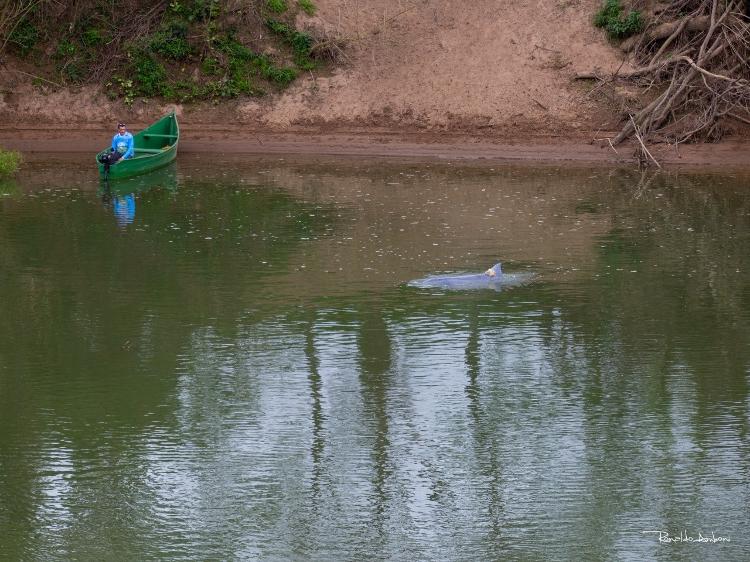
THE PROBLEM IS POLLUTION
But that, too, wouldn’t be a big problem, since dolphins are mammals that breathe the same air as us (so, at least in theory, they can live in both fresh and salt water), if it weren’t for a perverse peculiarity of that river in issue: pollution.
The Tubarão River receives raw waste from thousands of homes along its banks, in addition to a lot of industrial and pesticide residues from plantations in the region.
NEVER WENT THAT FAR
But the fact of having entered that river would not be a big problem, since it has already done it other times, were it not for two details – these, yes – quite worrying: Caroba has never advanced so far into the river (it is, at this moment, more than 35 kilometers from the mouth of the river, and does not show the slightest sign of wanting to go back), and exhibits a growing wound in the dorsal fin, potentiated, apparently, by the contamination of the river.
“It’s not a wound”, corrects marine biology professor Pedro Volkmer de Castilho, from the State University of Santa Catarina.
“It is a cutaneous granuloma, caused by the infection of a species of fungus, whose growth is directly associated with degraded environments, with high levels of contamination, such as industrial waste and residential waste,” explains the specialist.
“Possibly, that animal already had a lesion on the skin, which worsened when it had contact with polluted waters. The treatment would be simple, with topical ointments, but since it is an aquatic animal, and on top of that, free in nature, this is practically impossible,” laments the professor.
‘THERE’S A BOTO IN THE RIVER’
The accelerated growth of the infection and the successive failures of the operations that try to take the dolphin back to the channel where it always lived are the biggest concerns of the photographer and member of the NGO Boto Vivo, Ronaldo Amboni, who has been following – and documenting – the case.
Since last week, when residents of the city of Tubarão (which, despite the name, is kilometers from the sea) gave the alert that there was “a dolphin in the river”.
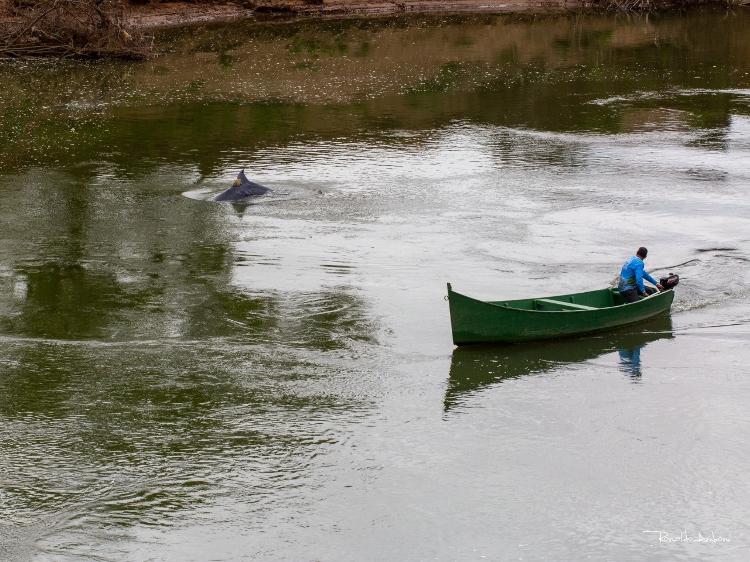
The animal crossed the entire city and continued swimming, towards the interior of the state, attracted, most likely, by the fish shoals that it found ahead.
ATTEMPTS STILL FAILED
Currently, it is on a stretch of the Tubarão River that passes close to Rodovia SC-390, where it has already become an attraction for drivers – and it shows no signs of wanting to return to the seaside.
“It is well fed, because there are many mullet and tilapia, which it spends the day capturing, alone, as it always liked to do”, says the photographer-environmentalist Amboni, who, after photographing the dolphins of Laguna, where he lives, has a deep knowledge of the behavior of each of those animals that frequent the city’s canal – especially Caroba itself, whom he has known for decades.
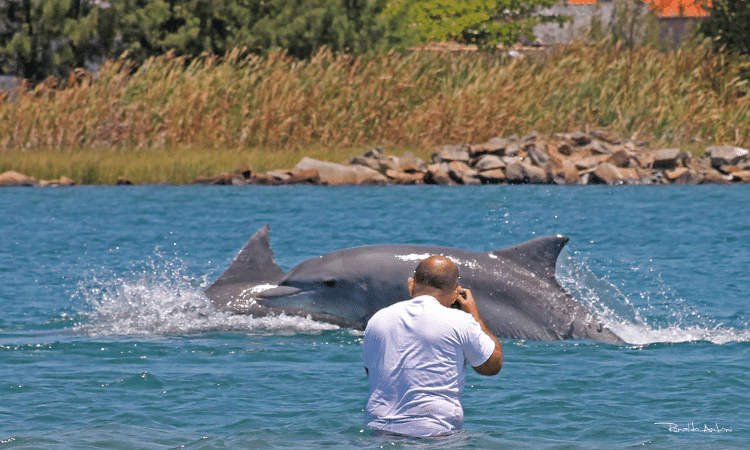
“Caroba is one of the oldest dolphins in Laguna and must be around 50 years old. But the most curious thing is that, to this day, no one knows if it is male or female, because it has never lived intimately with other dolphins, nor has it ever been seen with pups,” says Amboni, who, over the weekend, helped set up a kind of trap in the river, to try to capture or induce the dolphin to return to the sea.
“But the effort was in vain.”
LESS THAN ONE METER DEEP
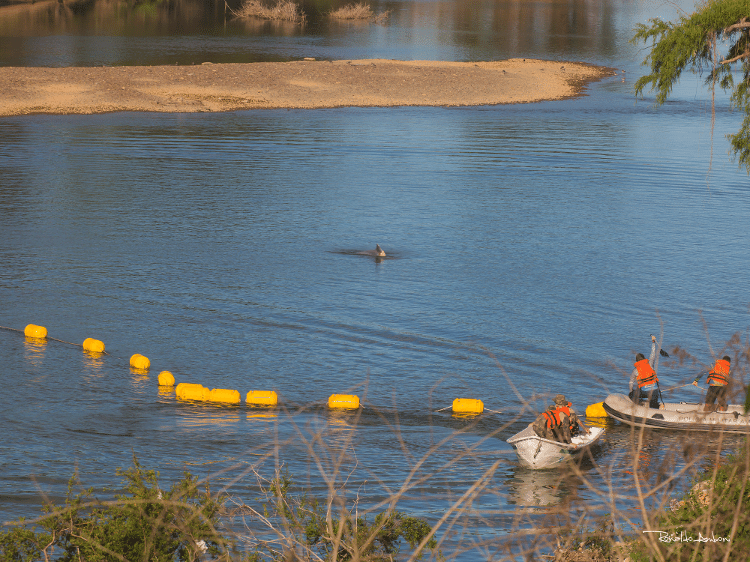
“Caroba, who is very smart, found a hole in the net and passed to the other side of the barrier that we had set up across the river. It also ignored the device that made sounds underwater, to try to make it stop moving in the opposite direction to the sea.”
“It’s a very smart dolphin, but it doesn’t know the risk it’s taking when swimming in a polluted river. We have to help it get back home,” says Amboni, whose concern is also with the current low volume of water in the river and the obstacles that come with it.
“Caroba entered the river during a very high tide when there was a lot of water. But now the river is low and, in some places, it is not more than a meter deep, which is very shallow for an animal of almost two meters long,” explains Amboni.
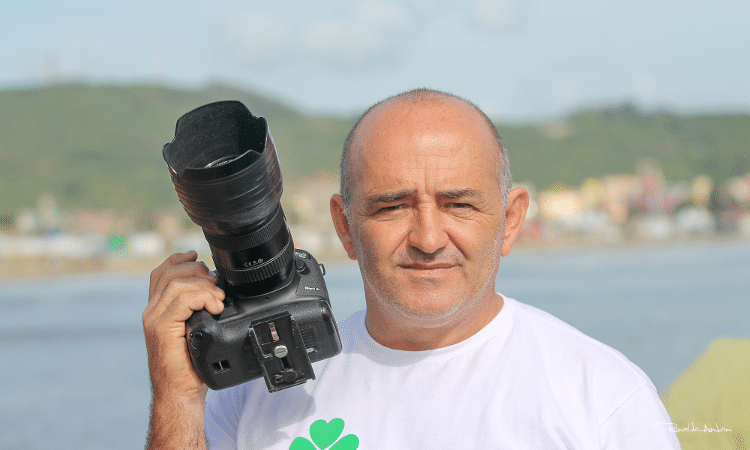
“Maybe we need to dredge part of the river so it can go back to the sea,” he says.
RINGWORM ONLY INCREASES
“In addition, the rains of the last few days have filled the river with tree branches, making it even more difficult for the boto to pass, in some places,” adds Amboni, who is also very concerned about the accelerated growth of ringworm, since the animal entered the polluted river.
“I’ve been taking daily photos of him, and the growth of the area affected by the fungus is visible. In just three days, it increased a lot.”
IT FISHES WITH THE FISHERMEN
Caroba’s popularity in Laguna is great, because it is one of the city’s “botos”, animals that, on their own initiative, help fishermen catch fish in the channel, surrounding the shoals between them and the nets.
“They do this because they benefit from the nets, as they corner the shoals”, explains Amboni, who adds: “Caroba is one of the best fishing dolphins in the city, hence its popularity.”
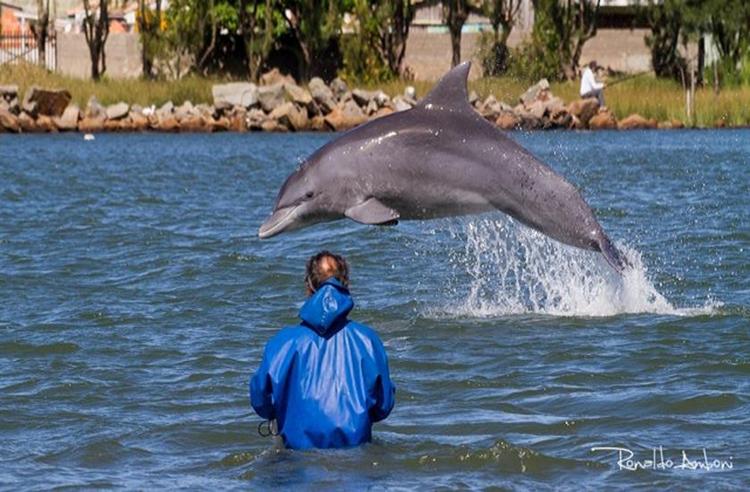
“Nobody taught the dolphins to do that,” explains a fisherman from the town.
“They learned on their own and passed it on from father to son. I think they were the ones who taught us to fish like this,” he jokes.
PHENOMENON THAT ONLY HAPPENS THERE
The total interaction between dolphins and fishermen, in a type of solidarity fishing that only brings benefits to both parties, is a phenomenon that only happens in Laguna.
So much so that the “fisherman botos” – a colony with about 20 individuals, of which Caroba is one of the best known – were transformed into “Municipal Heritage,” through a decree, years ago.
They also gained the protection of the NGO Boto Vivo, which started to fight in favor of measures that reduced pollution in the Tubarão River, since it is at the end of it, by the sea, that the dolphins stay.
Now, with the dolphin’s unprecedented incursion so far into the river – and the damage that pollution is already causing to the animal’s skin -, the issue of pollution of the Tubarão River should come back to the fore.
“If that happens, it will be the only benefit of the perilous journey the lone dolphin has been making in that polluted river.”
MOST FAMOUS INHABITANTS OF THE CITY
After Anita Garibaldi, the fisherman dolphins are the most famous residents of Laguna. The images of happy dolphins decorate almost everything in the city and are a kind of informal symbol of the municipality – hence the mobilization that Caroba’s mischief has generated in many volunteers, such as Amboni himself.
A DOLPHIN THAT MADE HISTORY
Equal popularity involving dolphins only exists in a few small towns in the Cape Hatteras region, in the U.S. state of North Carolina, where, in the past, a certain albino dolphin made history (and today has become the hallmark of everything), by to guide, voluntarily, through dangerous channels between sandbanks, the boats that arrived at the port of the city – a behavior as curious as it is inexplicable until today.
Like that legendary dolphin from Cape Hatteras, the fisherman dolphin Caroba, from Laguna, can also go down in the region’s history.
“But hopefully not because he ended his days locked in a polluted river.”
With information from UOL

